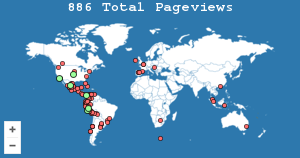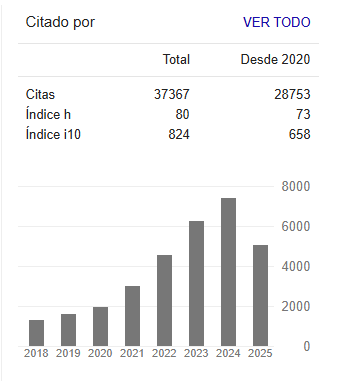Factors that influence the optimization of resources in social service companies
Abstract
The objective was defined to analyze the management indicators that serve to optimize resources in Social Service Companies. The Methodology used was located in a positivist model, quantitative approach, non-experimental design, transactional field. The population consisted of thirty (30) people, constituted as a population census. Data were collected through surveys using a form with five closed response alternatives with a positive direction. The validity of the content was obtained by consulting the opinion of ten (10) experts and the discriminating ones with the data of the pilot test, highlighting that the ten items were discriminated. The analysis of the results was guided by inferential statistics. It was shown that management indicators intervene little in the optimization of resources of social service companies. It is concluded that the optimal functioning of all social service companies will depend on the way that the aspects that influence internally and externally for the survival or growth of any organization are analyzed and exploited.
References
Avagrafoff, (1997). La gestión. 3ra Ed. Editorial Madrid España.
Beltrán, J. (1998). Indicadores de Gestión. Herramientas para Lograr la Competitividad. 3R editores.
Boland, R., Lyytinen, K., y Youngjin, Y. (2007). Wakes of Innovation in Project Networks: The Case of Digital 3-D Representations in Architecture, Engineering, and Construction. Organization Science, 18(4), 631-647. https://doi.org/10.1287/orsc.1070.0304
Chávez, J., y Ibarra, J. P. (2016). Liderazgo y cambio cultural en la organización para la sustentabilidad. Telos, 18(1), 138-158. https://www.redalyc.org/pdf/993/99344833009.pdf
Chiavenato, I. (2004). Comportamiento Organizacional. McGraw-Hill.
Davenport, T. H. (1999). Knowledge Management and the Broad Firm: Strategy, Advantage and Performance. En: LIEBOWITZ, Jay. Knowledge Management Handbook. Boca Raton: CRC Press, p. 2-11.
Febles, J., y Oreja, J.R. (2008). Factores externos e internos determinantes de la orientación de la cultura. Estratégica de las empresas. Investigaciones Europeas de Dirección y Economía de la Empresa, 14(1), 13-31.
Fernández, J (2015). Los Factores Externos en las Organizaciones.
Gitman, L. (1996). La Competitividad. Bogotá: 3R Editores.
González (2000). Economía Óptima y Oportuna. Bogotá: 3R Editores.
Hernández y Rodríguez, S. (2002). Administración: pensamiento, proceso, estrategia y vanguardia. McGraw-Hill.
Jiménez, J. G. (2004). La comunicación interna y los entornos de la empresa. En J. G. Jiménez, La comunicación interna (Pág. 361). Madrid: Díaz de Santos
Mintzberg, H. (1990). Strategy formation: Schools of thought. En: Fredrickson, James (Ed.). Perspectives on strategic management. Harper Business. USA.
Ross, S., Westerfield, R., & Jaffe, J. (2012). Finanzas Corporativas. 9na. Ed. McGraw-Hill.
Serna, H (1992). Mercadeo Corporativo. El Servicio al Cliente Interno. Equipo de Mejoramiento Continuo. Legis. Bogotá.
Serna, H (2006). Gerencia estratégica. Planeación y Gestión. Bogotá: 3R Editores.
Vásquez, C. (2020). Estructura organizacional, tipos de organización y organigramas. https://bit.ly/2NJdin2








.png)






























